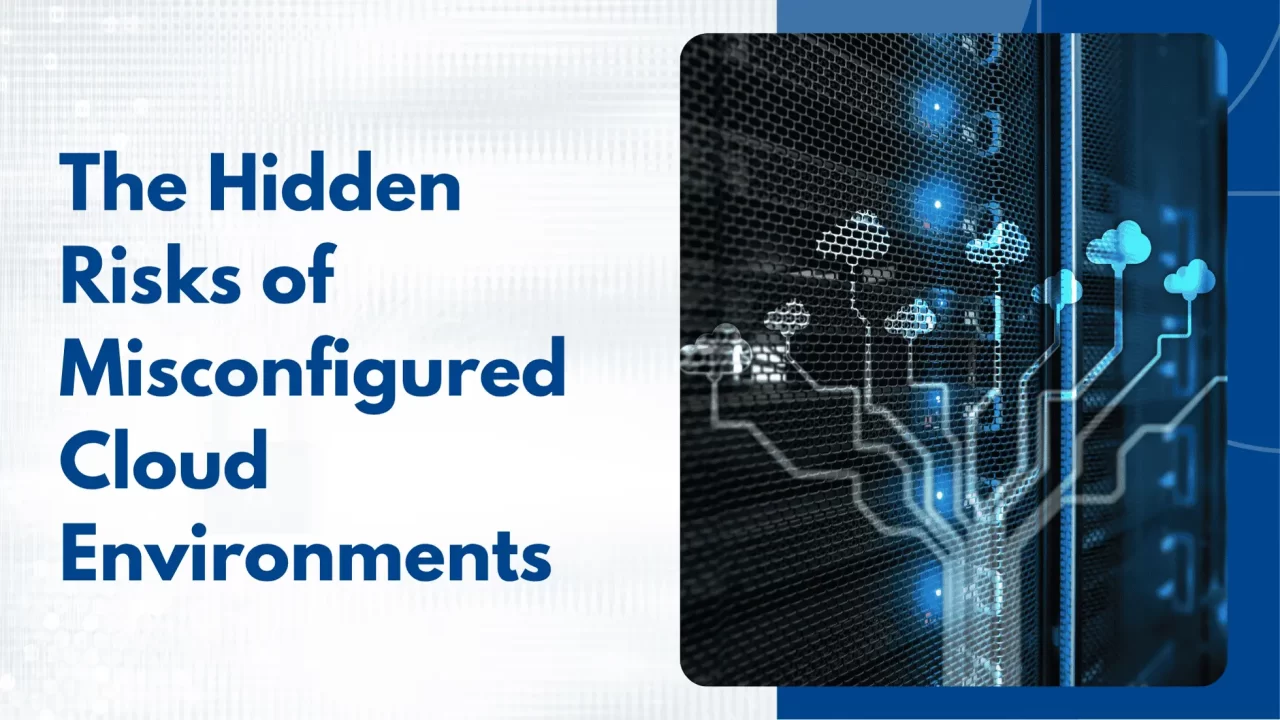Cloud computing has revolutionized how businesses operate, enabling greater agility, scalability, and efficiency. However, this convenience often comes with hidden dangers—and one of the most prevalent and dangerous is cloud misconfiguration. A single misconfigured setting can expose sensitive data, violate compliance rules, or create an open door for attackers.
In this blog, we’ll break down the hidden risks of misconfigured cloud environments, the real-world consequences of neglect, and how to proactively manage these risks to secure your digital assets.
What is Cloud Misconfiguration?
Cloud misconfiguration occurs when cloud resources are set up incorrectly, making them vulnerable to unauthorized access, data breaches, or service disruptions. This may include:
- Leaving cloud storage buckets publicly accessible
- Weak or missing identity and access controls
- Unrestricted inbound or outbound traffic rules
- Poorly configured encryption settings
- Inadequate logging and monitoring
These errors are often unintentional, arising from human error, lack of cloud expertise, or default configurations that prioritize functionality over security.
Real-World Risks and Consequences
- Data Breaches
Misconfigured cloud storage is one of the leading causes of data breaches. Whether it’s customer data, internal documents, or intellectual property, a single exposed bucket or database can lead to massive losses.
- Compliance Violations
Regulations like GDPR, HIPAA, and PCI DSS require organizations to implement proper data protection measures. Cloud misconfigurations can result in non-compliance, leading to legal penalties and reputational damage.
- Unauthorized Access
Overly permissive access controls can allow attackers or untrained personnel to make changes, extract data, or disrupt services. This is especially critical in multi-cloud or hybrid environments where visibility is limited.
- Resource Exploitation
Misconfigured settings can allow attackers to hijack cloud resources for cryptomining, launching attacks on other systems, or maintaining persistent access for future exploitation.
- Service Downtime
Incorrect configuration of availability zones, load balancers, or firewalls can lead to disruptions in service delivery—causing loss of revenue and user trust.
Common Causes of Cloud Misconfiguration
- Lack of Cloud Security Expertise: Teams unfamiliar with cloud-native tools and practices are more likely to make configuration mistakes.
- Complex Infrastructure: Multi-cloud environments often involve multiple tools, platforms, and APIs, increasing the risk of misalignment.
- Manual Processes: Hand-configuring settings without validation or automation creates inconsistencies.
- Shadow IT: Unauthorized or unmonitored cloud usage by employees can lead to untracked and misconfigured services.
Proactive Measures to Prevent Misconfigurations
- Use Cloud Security Posture Management (CSPM) Tools
These tools automatically detect and correct misconfigurations across cloud environments. They continuously scan for violations against best practices and compliance frameworks.
- Implement Infrastructure as Code (IaC)
IaC tools like Terraform and AWS CloudFormation help standardize and automate configurations, reducing human error.
- Enforce Role-Based Access Control (RBAC)
Limit permissions based on the principle of least privilege. Grant access only to what is necessary for each role.
- Enable Logging and Monitoring
Use cloud-native logging tools and SIEM platforms to monitor configuration changes, access patterns, and security anomalies.
- Conduct Regular Audits and Risk Assessments
Schedule frequent reviews of your cloud security posture to ensure policies and practices remain effective.
- Provide Security Training for Cloud Teams
Ensure developers, administrators, and DevOps engineers understand secure cloud practices and compliance obligations.
The Role of CNAAP in Reducing Misconfiguration Risks
A robust Cloud-Native Application Protection Platform (CNAAP) can help reduce misconfiguration risks by providing end-to-end visibility, automated policy enforcement, and integration with CI/CD pipelines. CNAAP platforms:
- Continuously monitor cloud configurations
- Provide real-time alerts and automated remediations
- Align with compliance frameworks like ISO 27001 and GDPR
- Secure containers, APIs, and cloud workloads from development to runtime
To learn more about how Vanaps supports businesses through CNAAP, visit our CNAAP solution page.
Conclusion
Cloud misconfigurations are silent threats that can lead to serious consequences if left unchecked. By investing in the right tools, enforcing access controls, and fostering a culture of cloud security, organizations can prevent data exposure, service outages, and compliance failures.
Don’t let a simple oversight become your next breach. Strengthen your cloud security posture today.
Need help securing your cloud environments? Talk to our cloud security experts and get a tailored assessment of your risks and opportunities.



